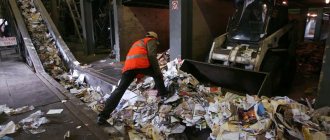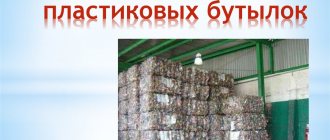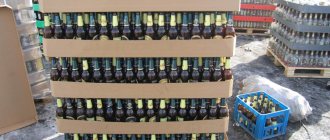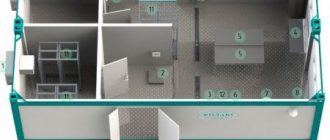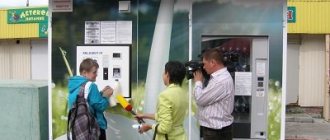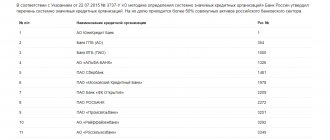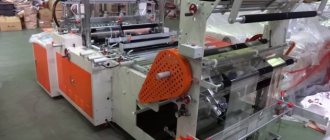Market needs
The need for the construction of waste processing complexes is difficult to overestimate. The life processes of large cities leave behind millions of tons of garbage and waste, most of which city authorities are forced to simply burn. Disposing of waste in this way is extremely harmful to the environment, since combustion products remain in the atmosphere. And if the landfill is located near the city (which happens most often), then any tailwind will bring all the “soot” to the local residents. The construction of waste processing plants can radically change the situation. Such complexes do not pollute the atmosphere during waste processing and do not produce any emissions or waste. Therefore, such enterprises can be located in close proximity to the city. The result of waste processing is compost, PET crumbs, briquettes of ferrous and non-ferrous metals, cinder blocks, glass powder, agglomerate, and so on. As a result, we obtain products that are extremely important for many industries, including industrial production, construction and the food industry. The big advantage of opening such a production from a business point of view is that the raw materials (garbage) are supplied to the plant free of charge. Despite the fact that the products obtained as a result of processing are no worse in quality than specialized production. Moreover, due to free raw materials, the output is products with a lower cost, and therefore with a lower and competitive selling price.
Download a business plan for a waste recycling plant from our partners, with a quality guarantee.
Waste processing plant
Maintaining a waste processing plant is an expensive undertaking, because it requires an expanded property complex. It includes not only production equipment, but also a vehicle fleet consisting of cleaning and waste collection vehicles. The area of such factories takes up a significant square footage, since daily consumption leads to an increase in the waste produced by society.
Garbage collection vehicles are not ordinary cargo-type vehicles. These are heavy-duty garbage trucks, often assembled on the basis of Kamaz. They provide an entire system that functions for efficient assembly. It is assumed to be equipped with an automated loading device, the presence of presses for compaction, and a large container for transportation.
Complex structuring is also provided for the technological operations themselves and the preceding procedures for accepting delivered waste. Having brought cargo after a shift, the waste collector cannot simply send it for recycling. To do this, a specialized service checks the safety of such cargo for toxic and radiation components using dosimeters.
If the inspection result is favorable, the garbage trucks are sent to the receiving site, where an automatic conveyor and staff of the plant operate to dismantle the delivered waste. Despite the automation of work, such waste processing plants in Russia actively use human resources.
Sorting algorithm:
- Primary on the receiving conveyor. Involves the selection of large items (furniture, household appliances, etc.). Its screening into a separate cluster is required so as not to damage the main sorting equipment located directly inside the processing plant.
- In the production building, waste is transferred to the stage of separating the smallest components that are of no value. After which the remainder can be renamed as raw materials.
- Such harvesting is still considered civil waste that has not been processed. Therefore, the entire mass is characterized as potentially dangerous to living organisms. Consequently, the garbage goes through a phase of processing it and getting rid of pathogens. One method is ultraviolet light.
- After this, the waste goes directly to manual disassembly along a moving belt. The plant's staff selects raw materials that can be recycled and reused.
- The sorted sections end up in a profile bin and are ready for processing. Filtration can be highly specialized. For example, glass containers are not only separated from other fractions, but also distributed according to color.
It is worth noting that sorting within the framework of waste classification can be carried out without the participation of personnel. The latest technologies (for example, optical laser sorting) provide electronics functionality in this direction. However, such developments and their application are extremely expensive. They are only permissible in large-scale industries, while you can start a business by creating a mini waste processing plant
Valuable raw materials are found among the general waste mass in huge quantities. However, within the boundaries of the plant there is still waste material unsuitable for further work. It has no potential for recycling and financial benefit for the plant itself. Therefore, unnecessary waste can be disposed of in an organized burial or incineration manner.
In the second option, harmful volatile substances are filtered, making the white steam released into the atmosphere and furnaces harmless. The advantage of the latter type of recycling is the possibility of exploiting the energy generated in the furnace for its conversion into electricity, if the plant has its own small power plant.
As for the burial method, for maximum safety of the planet and to prevent dangerous harmful substances from entering the depths, the plant has special presses. They are designed for maximum extraction of excess liquid and pressing. The burial takes place at a designated site.
How waste is processed at a factory
Product Description
The company plans to produce the following types of products: cinder blocks, compost, briquettes of non-ferrous and ferrous metals, glass powder, agglomerate, PET crumbs. The plant's plan is to produce up to 1.1 tons of processed products per shift (8 hours). The monthly production volume in this case will be 24.2 tons. Product prices will be as follows:
- Compost - 13 rub.\kg
- PET crumbs - 35 rub.\kg.
- Ferrous metal briquettes - 10 rubles per kg.
- Glass powder - 10 rubles per kg.
- Cinder blocks - 2 rubles/kg.
The company will operate 22 days a month in one 8-hour shift. The average selling price per kilogram of manufactured products will be 14 rubles. Thus, the potential turnover of the waste recycling enterprise will be 338,300 rubles per month or 4,059,600 per year.
Material sorting
It will take hard work to separate the wheat from the chaff. According to GOST 10700–97, waste paper and cardboard are divided into three categories - A, B, and C:
- Category “A” includes paper of the best quality, white (office paper, bags, sacks);
- category "B" - average quality of paper in the printing sector, with the exception of cardboard and newspapers;
- category “B” includes low-quality paper waste (cardboard of various colors, newspapers and paper products impregnated with various compositions).
Ideally, to conserve natural resources, most paper waste should be recycled. In Russia this figure is still small, only 12%. Those who decide to open a paper processing plant will need to rent industrial premises, purchase the necessary equipment, freight transport, and hire personnel.
Even if the plant is engaged in only partial processing of waste paper (pressing), then, in addition to storage space, transport and personnel, it will be necessary to purchase a press machine, the cost of which can range from 80-500 thousand rubles.
Entrepreneurs are opening collection points for waste paper and its partial processing near large paper processing enterprises, which will buy pressed raw materials from them at a price of 1–3 thousand rubles/1 ton.
We recommend: Shredder: a machine for destroying paper, its types and use
What equipment to choose for production
The production will consist of a mobile waste processing complex MMK-100-“N”, costing 4.2 million rubles.
The module is installed on a flat surface (for example, made of concrete slabs) and does not require the construction of a foundation. The length of the complex is 20m and the width is 12m. The plant includes the following components: jet skis, dispensers, an agglomerator, a briquetting press, a sorting conveyor, a magnetic drum, a container for collecting metal, a control panel, a screen, a food waste grinder, a mineral grinder, and a feeding conveyor. The plant consumes only 7 kW.
Processing equipment
The list of equipment that will be needed to open a waste recycling plant includes:
- waste storage bin;
- sorting line with conveyor;
- compaction press;
- crushers for grinding waste;
- magnet, in case of recycling metal waste;
- loader and elevator for loading and unloading raw materials.
Additional types of equipment may be required for various types of waste and for the production of semi-finished products or incineration of waste for energy. Foreign-made devices are expensive, but it is possible to lease them. To reduce costs, it is possible to purchase used equipment or domestic samples. Domestic ones are cheaper, more repairable, and easier to obtain spare parts. The total cost of equipment installed and connected at the enterprise is 20 million rubles.
Transport is a separate line. To start an enterprise, it is more profitable to agree to rent a vehicle; the cost of renting a specialized garbage truck per hour is 1-1.5 thousand rubles.
Recruitment
Thanks to high automation, only 2 workers (operators) are required to operate the processing plant. You can deliver garbage and waste using your own vehicles (with a hired driver) or accept raw materials from third-party organizations. To sell processed products, you will need to hire a sales manager. Also, a production manager, technologist and security guards are required. An accountant can be hired part-time (under an outsourcing agreement). The total staff of employees will be 6 people. The monthly wage fund will be equal to 90 thousand rubles.
Financial plan
Fixed monthly costs of a waste treatment plant
- Salary + insurance contributions - 120,000 rubles.
- Utility costs (electricity) - RUB 30,000.
- Expenses under contracts (accounting) - 8,000 rubles.
- Fuel and lubricants - 15,000 rubles.
- Advertising - 20,000 rubles.
- Depreciation—RUB 10,000.
Total - 203,000 rubles. Monthly expenses under the business plan will amount to 203 thousand rubles, annual expenses - 2,436 thousand rubles.
How much can you earn at a waste recycling plant?
Net profit at the end of the month will be 115,005 rubles. The profitability of the processing enterprise is 56%. The return on investment, taking into account the period for business promotion, will occur after 46 months of operation.
We recommend downloading a business plan for a waste recycling plant from our partners, with a quality guarantee. This is a full-fledged, ready-made project that you will not find in the public domain. Contents of the business plan: 1. Confidentiality 2. Summary 3. Stages of project implementation 4. Characteristics of the object 5. Marketing plan 6. Technical and economic data of the equipment 7. Financial plan 8. Risk assessment 9. Financial and economic justification of investments 10. Conclusions
Step-by-step plan for opening a waste recycling plant
First, it is necessary to conduct a market analysis, identify potential competitors and their scope of activity. This will facilitate the task of drawing up a business plan and further development strategy. In short, step-by-step instructions for organizing a waste recycling plant consist of the following points:
- Analysis of the market and competitors in the niche.
- Selection of suitable areas for the location of a future plant or waste processing workshop.
- Search for future waste suppliers.
- Analysis and acquisition of necessary equipment.
- Registration with the governing bodies of your business, obtaining various permits and certificates.
- Search for potential consumers of processed raw materials.
- Conducting marketing research and advertising
- Personnel selection.
Reception of raw materials
For a paper processing enterprise, the raw material base is of great importance. Working around the clock, the workshop must be constantly supplied with raw materials - at least 10 tons per day. To this end, a number of activities should be performed:
- Open paper waste collection points and inform large stores and supermarkets interested in disposing of used packaging.
- Install special containers near business centers and educational institutions.
- Inform the population about the functioning of reception points; for this you can use the media.
Typically, organizations such as:
- government agencies;
- educational establishments;
- libraries;
- printing houses;
- office centers.
To stimulate business relations, it is recommended to independently collect paper waste from suppliers with an additional payment of 25 rubles per 100 kg. Subsequently, these expenses will be fully recouped.
Documents required to open a waste recycling plant
To open a plant, first of all, you need to register an individual entrepreneur or LLC, depending on the scale of production and further development in the future. It is best to choose an LLC, since this type of activity requires the presence of business partners and significant investments. Documents for opening a limited liability company include:
- Application for state registration of legal entities.
- Minutes of the meeting of founders.
- Agreement on the establishment of a company.
- Charter of the company.
- Notification of transition to the simplified tax system.
You can prepare all the documents yourself, but to save money and time, it is recommended to seek help from specialized companies that will help with the preparation of the necessary documentation.
Garbage disposal
The waste recycling mini-plant has several areas of activity - waste disposal and recycling. Raw materials from which no benefit can be extracted are destroyed. This can be done in several ways:
- backfilling with earth. To do this, the biomass is placed under 0.8 m thick soil. During the decomposition of the raw material, gas is released, which is collected in special containers. It is an excellent source of energy and is used in many industries;
Ways to dispose of waste - burning of garbage. This produces gases and thermal energy, which can be used to produce electricity. The disadvantage of this method is the presence of harmful emissions into the atmosphere;
- biothermal composting. The waste is cleaned of metal, plastic and other unwanted inclusions, and then placed in a special tank. Under the influence of hot air, biomass turns into compost in a few days, which can be used for the needs of farms;
- pyrolysis Waste processing occurs under high temperature in the absence of oxygen.
Production technology
The production technology means the processing of incoming raw materials using a mobile waste processing complex (MMK) and further production of products - crumbs, briquettes of ferrous and non-ferrous metals, cinder blocks, agglomerate. The entire process is automated and requires minimal human intervention. To receive products, you just need to purchase MMK and select personnel to service the complex. Depending on what type of product you want to produce, a waste processing complex with certain characteristics is selected.
( 2 ratings, average: 5.00 out of 5)
Loading…
Similar business ideas:
- TOP 30 business ideas without investment
- TOP 30 business ideas with minimal investment
- Mini smokehouse as a business
- How to start a waste paper recycling business with...
Sales channels
After processing, waste paper is used as secondary raw material by enterprises specializing in the manufacture of the following products:
- packaging material, cardboard and paper containers;
- egg cells;
- paper products for personal hygiene;
- Construction Materials.
Work with the client base should be carried out with the help of a well-organized advertising campaign. For this purpose, you need to use the media, the Internet, cold calls, leaflets and business cards.
Business income depends on the volume of processed waste, as well as the specific region, since the demand for such raw materials is different everywhere. On average, from 30 tons of paper waste you can get 10 tons of good paper, the cost of 1 ton is 40,000 rubles. Without deducting taxes and current costs, the monthly profit will be about 1,000,000 rubles. Under favorable conditions, the profitability of the enterprise will reach 100-150%. We recommend looking at existing paper manufacturers and conducting competitive intelligence.
03.03.2020
